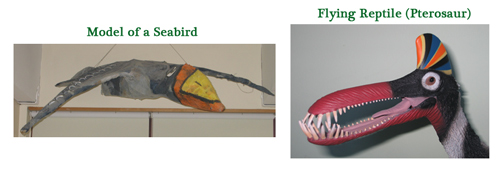Reception Class Stomping Like Dinosaurs and their Dinosaur Exhibit
Another busy day for Reception class at Eaton Primary School as they have been studying dinosaurs and other animals that lived long ago. Our dinosaur expert was very impressed with the colourful dinosaur drawings that had been posted up around the classroom.
A Dinosaur Workshop
Under the expert tutelage of teacher Mrs Duffell, ably supported by Miss Parker (Teaching Assistant), the children had been learning together, helping each other to explore prehistoric animals. Reception class had learned about fossils and how some of them are formed, they had used charcoal to create some very decorative ammonite fossil drawings, it was helpful to have ammonite fossils available for the children to handle. Some wonderful use of vocabulary as the eager young palaeontologists explored how fossils felt.
Dinosaurs and Prehistoric Animals
There were some very confident counters as the class compared the size of their hands to the footprints of various dinosaurs. Our dinosaur expert, who had visited the school for the morning, also had his hand measured. He was told that some dinosaurs had small feet and left small footprints, whilst other dinosaurs had massive feet and left massive, huge footprints. A lovely example of children using language to express ideas and demonstrate understanding.
Seabirds and Pterosaurs
A special dinosaur shop/exhibit had been set up in a corner of the classroom, a great location for role play. Hanging above this area was a wonderful model of a seabird, that reminded our dinosaur expert of a pterosaur (flying reptile). Pterosaurs were not dinosaurs, but they were related to the group of reptiles called the Dinosauria. Many pterosaurs adapted to life in marine habitats and just like many seabirds today, they hunted fish. Whilst the big ammonites under the water caught fish, flying over the waves pterosaurs were on the lookout for any fish foolish enough to swim close to the surface.
The seabird model, reminded us of the pterosaur called Guidraco, a flying reptile whose fossils have been found in China. The name of this flying reptile translates as “malicious ghost dragon”, with those sharp teeth even the most slippery fish would not escape.
Comparing the Model Seabird to a Pterosaur
Picture credit: Everything Dinosaur
Guidraco Pterosaur
When it came to designing the Guidraco replica, it was suggested that since this animal lived in a marine habitat, perhaps it should be coloured in a similar way to a Puffin. The colourful crest on the pterosaur reminds us of the large, colourful beak of the seabird that hangs over the dinosaur shop area. Both Puffins and Guidraco pterosaurs ate fish and the big teeth of the pterosaur are quite impressive, but not as big as those of a meat-eating dinosaur like Tyrannosaurus rex.
A challenge was set, could the young palaeontologists work out how big a T. rex tooth was? Could they answer the question which was bigger a Tyrannosaurus rex tooth or a banana? No doubt the Reception class will have fun with this investigation and perhaps they can think of creative ways in which they could display the information.
To conclude the visit, the children performed their dinosaur stomping song, lots of fierce dinosaur expressions all around the classroom.
The Guidraco model used to compare to the Reception class seabird is the 1:4 scale CollectA Guidraco model from the company’s Supreme/Deluxe replica range: CollectA Deluxe/Supreme Prehistoric Life.



Leave A Comment